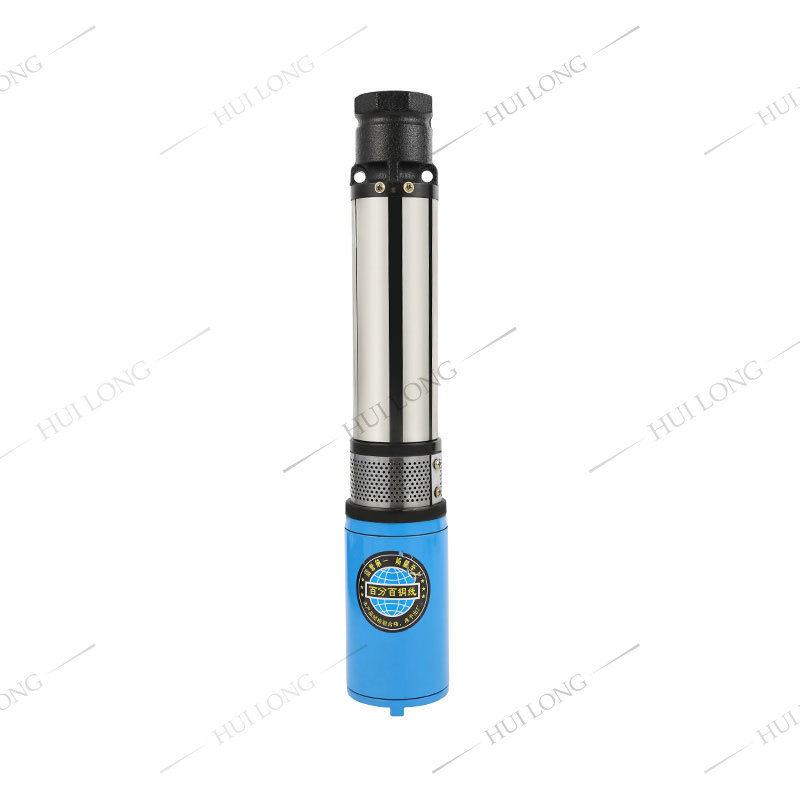China Custom Automatic Convertible Deep Tube Well Pump Supplier
Automatic deep well pumps are essential tools for efficiently extracting water from underground sources. While these pumps are designed to operate smoothly and reliably, they can occasionally encounter issues that disrupt their performance. Troubleshooting these problems can help maintain the efficiency and longevity of the China automatic deep well pump. In this article, we will explore some common issues that can arise with these pumps and how to address them.
One of the common problems with an automatic deep well pump is a lack of water flow. If the pump is running but no water is coming out, there could be several possible causes. Check the power supply to ensure that the pump is receiving electricity. If the pump is powered but still not functioning, the issue may lie within the pump itself. A clogged intake or damaged impeller can prevent water from being drawn into the system. In this case, removing the pump for inspection and cleaning or replacing the impeller may be necessary to restore proper function. Additionally, check the well’s water level, as a low water table can cause the pump to run dry, resulting in a lack of water flow.

Another common issue with automatic deep well pumps is the pump running continuously without shutting off. This can be a sign of a malfunctioning pressure switch. The pressure switch is responsible for monitoring the water pressure in the system and triggering the pump to start or stop based on preset pressure levels. If the pressure switch is stuck or faulty, the pump may fail to turn off once the desired pressure is reached. In such cases, replacing the pressure switch should resolve the issue and restore the normal operation of the Custom Convertible Well Pump. It’s important to regularly check and maintain the pressure switch to avoid this problem from occurring in the future.
A related problem is a pump that cycles on and off frequently, often called short cycling. Short cycling occurs when the pump turns on and off rapidly, which can result in excessive wear and tear on the system. This problem is often caused by a malfunction in the pressure tank or a faulty pressure switch. If the pressure tank is waterlogged or damaged, it may fail to maintain the proper pressure, causing the pump to turn on and off. To address this issue, check the pressure tank for waterlogging and, if necessary, replace or repair it. If the pressure switch is the culprit, replacing it should help eliminate the short cycling.
Low water pressure is another issue that can arise with an automatic deep well pump. If the water pressure drops significantly, it can affect the flow of water throughout the system. The cause of low pressure could be a clogged filter or a buildup of mineral deposits in the pipes. Cleaning or replacing the filter may restore normal water pressure. If the problem persists, it’s possible that there is a blockage or a leak in the pipes, which would require further inspection and repair. In some cases, low water pressure may be related to the pump’s motor, especially if the motor is worn or malfunctioning. Inspecting the motor for damage or wear and replacing it if necessary can help resolve the issue.
Another issue that can affect the performance of a Deep Tube Well Pump Supplier is pump priming failure. Priming is the process of removing air from the pump and the system to ensure that water can flow properly. If the pump fails to prime, the system may not be able to draw water from the well, resulting in no water flow. To fix this issue, check for any air leaks in the suction line, as these can prevent proper priming. Tightening connections or replacing damaged seals may help eliminate air leaks and allow the pump to prime correctly.
Finally, an automatic deep well pump can also experience electrical problems. These issues can include a blown fuse, a tripped circuit breaker, or faulty wiring. If the pump is not receiving power, inspect the electrical connections to ensure they are secure and free from damage. Check the circuit breaker to see if it has tripped, and reset it if necessary. If the wiring appears to be damaged or frayed, it may need to be replaced by a qualified electrician to ensure safe operation.
In conclusion, while automatic deep well pumps are reliable and efficient, they can encounter issues that impact their performance. Common problems such as lack of water flow, continuous operation, short cycling, low water pressure, priming failure, and electrical issues can be resolved through proper troubleshooting and maintenance. Regular inspections, cleaning, and replacing faulty components like the pressure switch, pressure tank, or motor can help prevent these problems and ensure that the pump operates efficiently for years to come. By understanding how to address these common issues, you can keep your automatic deep well pump running smoothly and reliably.


 中文简体
中文简体 عربى
عربى






